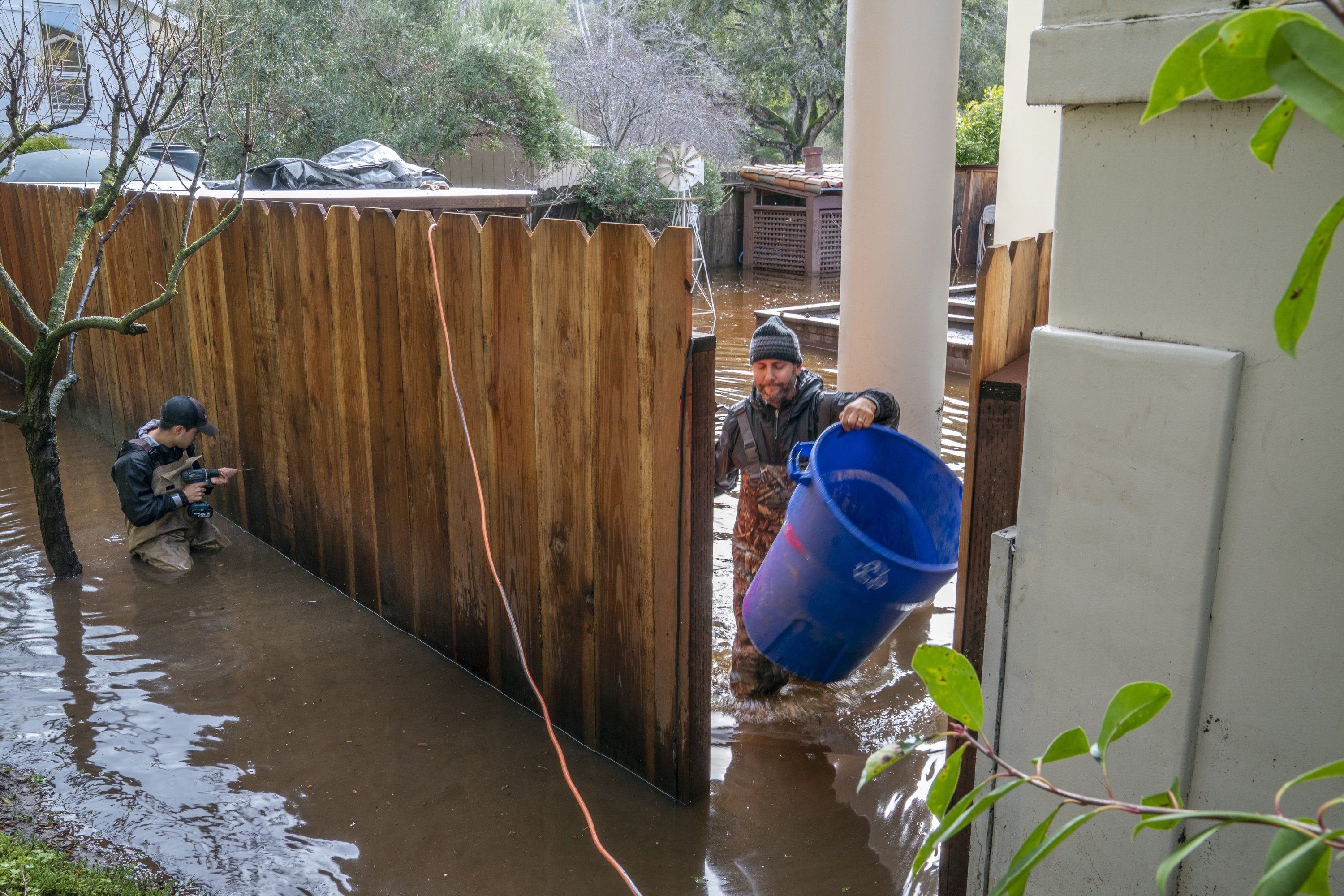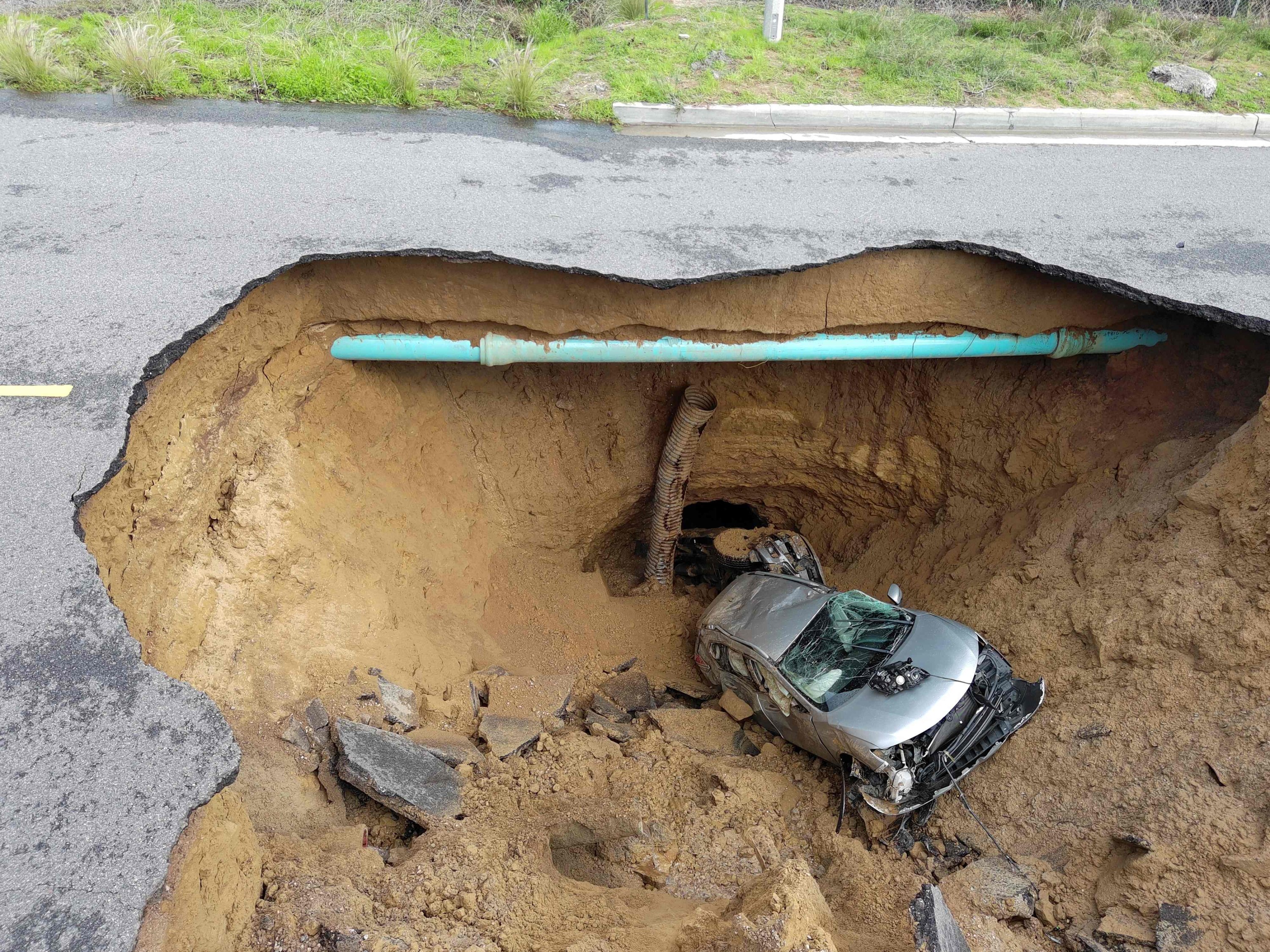© Turkuvaz Haberleşme ve Yayıncılık 2024
A string of powerful storms that began last month has bogged California down as sinkholes swallowed cars and floodwaters swamped towns.
A small boy was swept away by rising waters Monday while the next in a powerful string of storms loomed on the horizon Tuesday.
Millions of residents faced flood warnings, nearly 50,000 people were under evacuation orders, and more than 110,000 homes and businesses were without power because of heavy rains, lightning, hail and landslides.
At least 17 people have died from storms since late last month, Gov. Gavin Newsom said during a visit to the scenic town of Capitola on the Santa Cruz coast that was hard hit by high surf and flooding creek waters last week.
The deaths included a pickup truck driver and motorcyclist killed Tuesday morning when a eucalyptus tree fell on them on Highway 99 in the San Joaquin Valley near Visalia, the California Highway Patrol said.
"We've had less people die in the last two years of major wildfires in California than have died since New Year's Day related to this weather," Newsom said. "These conditions are serious and they're deadly."
The storm that began Monday dumped more than 45 centimeters of rain in the southern California mountains and buried Sierra Nevada ski resorts in more than 1.5 meters (5 feet) of snow.
Rockfalls and landslides shut down roads, and gushing runoff turned sections of freeways into waterways. Swollen rivers swamped homes and residents of small communities inundated with water and mud were stranded.

Raging waters crested the banks of Bear Creek and flooded parts of the city of Merced and neighboring Planada, a small agricultural community along a highway leading to Yosemite National Park.
Neighborhoods were under water with cars submerged up to their roofs. Residents ordered to evacuate carried whatever they could salvage on their backs as they left in the rain.
The wet and blustery weather left California's large homeless population in a precarious situation. At least two homeless people in Sacramento County died, and more than a dozen people were rescued from a homeless encampment on the Ventura River.
The storms have created what Newsom called a "weather whiplash," swinging from an epic drought to the other extreme and arriving with a fury and frequency likely to create problems well into next week.
While most of the state remains in extreme or severe drought, according to the U.S. Drought Monitor, the state said the water content in the snowpack is more than double the average.
"It's fair to say that what we're seeing right now in California will certainly help to relieve some of the localized aspects of drought, but will not resolve the long-term drought challenges," said Rick Spinrad, administrator of the National Oceanic and Atmospheric Administration.
The latest atmospheric river - a long plume of moisture stretching out into the Pacific that can drop staggering amounts of rain and snow - began easing in some areas. But more rain was forecast to arrive Wednesday in Northern California, and then a longer storm system was predicted to last from Friday until Jan. 17.
In the wealthy seaside community of Montecito, 80 miles (128 kilometers) northwest of Los Angeles, evacuation orders were lifted Tuesday for about 10,000 people, including Prince Harry, Oprah Winfrey and other celebrities. The community had been told to evacuate on the fifth anniversary of a mudslide that killed 23 people and destroyed more than 100 homes.

Meanwhile, a climate expert has warned that the costs to the state could be in excess of $1 billion.
The total is a reflection of "physical damage to homes, businesses and municipal properties," said Adam Smith, an applied climatologist and disaster expert with the National Oceanic and Atmospheric Administration (NOAA).
Smith is the lead researcher for NOAA's "U.S. Billion-Dollar Weather and Climate Disasters" report, which catalogs 18 such disasters from 2022.
He has reason to believe that the atmospheric river producing storms in California may join this year's list.
"Clearly, when everything is said and done after weeks of atmospheric rivers," Smith said, he "would not be surprised if this was the first billion-dollar event of 2023."
Other major costs could include lost productivity for individuals and businesses due to evacuation, agricultural damage from flooding and damage to boats and piers along the coast, Smith said.
